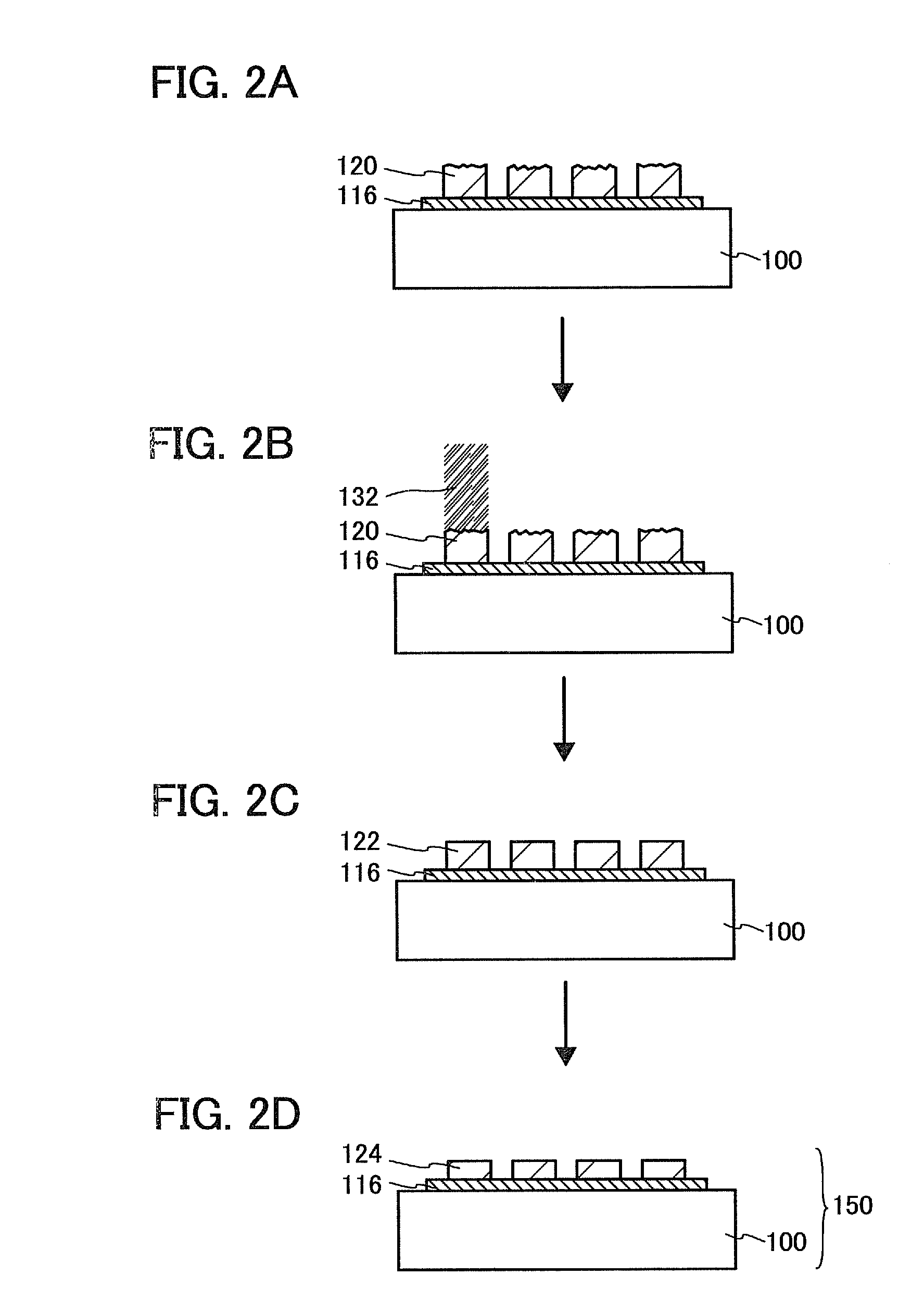Manufacturing method of semiconductor substrate
a manufacturing method and semiconductor technology, applied in the direction of semiconductor devices, basic electric elements, electrical apparatus, etc., can solve the problems of easy generation of defect levels, low efficiency of semiconductor elements manufactured using this single crystal semiconductor layer, and increase defects in single crystal semiconductor layers. , to achieve the effect of improving efficiency in manufacturing a semiconductor substra
- Summary
- Abstract
- Description
- Claims
- Application Information
AI Technical Summary
Benefits of technology
Problems solved by technology
Method used
Image
Examples
embodiment mode 1
[0041]In Embodiment Mode 1, a manufacturing method of a semiconductor substrate will be described with reference to FIGS. 1A to 1F, FIGS. 2A to 2D, FIGS. 3A to 3C, and FIGS. 4A to 4C.
[0042]First, a base substrate 100 is prepared (see FIG. 1A). As the base substrate 100, a visible light transmitting glass substrate used for a liquid crystal display device or the like can be used, for example. As a glass substrate, a substrate having a strain point of equal to or higher than 580° C. and equal to or lower than 680° C. (preferably, equal to or higher than 600° C. and equal to or lower than 680° C.) may be used. Further, it is preferable that the glass substrate be a non-alkali glass substrate. As a material of the non-alkali glass substrate, a glass material such as aluminosilicate glass, aluminoborosilicate glass, or barium borosilicate glass is used, for example.
[0043]Note that as the base substrate 100, as well as the glass substrate, an insulating substrate which is formed of an ins...
embodiment mode 2
[0096]In Embodiment Mode 2, the relationship between the island-shaped semiconductor layers and the irradiation regions of pulsed laser beams in the manufacturing method of a semiconductor substrate described in Embodiment Mode 1 will be described with reference to FIGS. 5A and 5B. FIGS. 5A and 5B each illustrate a mode where rectangular semiconductor layers and rectangular pulsed laser beams (planar pulsed laser beams) are used; however, the invention disclosed in this specification is not limited to this.
[0097]FIG. 5A illustrates a mode where one island-shaped semiconductor layer 502 formed over a base substrate500 is irradiated with one pulsed laser beam. Here, the irradiation region of the pulsed laser beam is shown by a region 504 (the region shown by a broken line in FIG. 5A). Note that the irradiation region of the pulsed laser beam means a region irradiated with a pulsed laser beam having an intensity equal to or higher than the threshold value Ith in Embodiment Mode 1. Here...
embodiment mode 3
[0102]In Embodiment Mode 3, an evaluation method which can be used for a manufacturing method of a semiconductor substrate will be described with reference to FIGS. 6A and 6B, FIGS. 7A and 7B, FIGS. 8A and 8B, and FIGS. 9A and 9B. First, an evaluation method of a semiconductor layer utilizing change in reflectance of a reference beam, with which a semiconductor layer is irradiated, depending on the melted state of the semiconductor layer and this nature, will be described with reference to FIGS. 6A and 6B and FIGS. 7A and 7B. In description with reference to FIGS. 6A and 6B and FIGS. 7A and 7B, the case where only the irradiation intensity of a pulsed laser beam is changed with a fixed irradiation time (pulse width) and a fixed irradiation pulse number will be described for simplicity.
[0103]In FIGS. 6A and 6B, a semiconductor layer 616 is formed over an insulating layer 612 and the insulating layer 612 is formed over a base substrate 600. Note that the semiconductor layer 616 is irr...
PUM
 Login to View More
Login to View More Abstract
Description
Claims
Application Information
 Login to View More
Login to View More - R&D
- Intellectual Property
- Life Sciences
- Materials
- Tech Scout
- Unparalleled Data Quality
- Higher Quality Content
- 60% Fewer Hallucinations
Browse by: Latest US Patents, China's latest patents, Technical Efficacy Thesaurus, Application Domain, Technology Topic, Popular Technical Reports.
© 2025 PatSnap. All rights reserved.Legal|Privacy policy|Modern Slavery Act Transparency Statement|Sitemap|About US| Contact US: help@patsnap.com



